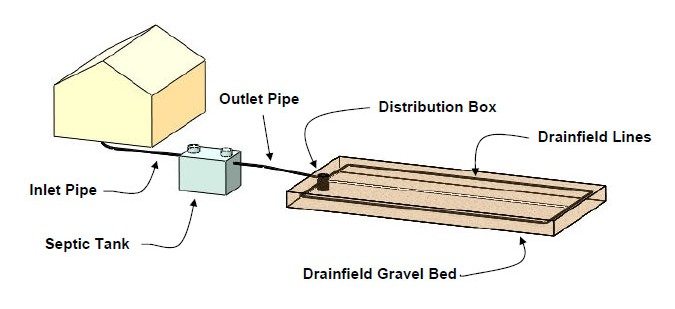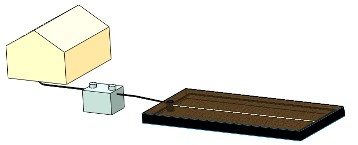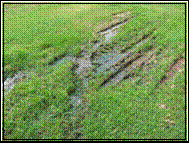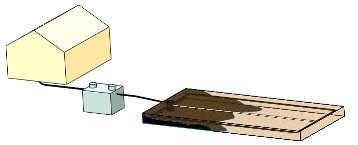Septic tank drainfield problems, also called septic system or drainfield problems, are specifically:
– Slow flowing drains.
– Sewage back-ups.
– Sewage water collecting on the ground above the drainfield.
How are these problems related to a septic system drainfield? A simplified overview of the septic system shown below shows the major components of a typical gravity fed septic system. Notice how the septic tank and drainfield are interconnected. The septic tank, a holding tank that allows bacteria to breakdown organic solids, passes water to the drainfield when incoming sewage displaces water in the septic tank.

Components of a septic system with a gravity fed drainfield
Incoming water into the drainfield has to be absorbed back into the ground. This has to happen for this system to function as it is the only way the system creates capacity for more incoming sewage. If the drainfield’s ability to pass water to the ground is impaired, the problems described above occur.

Biomat sealing anaerobic septic system drainfield
How does a drainfield stop passing water to the ground? In anaerobic septic system, a biomat forms over time. The biomat seals the bottoms and sides of the drainfield, preventing the surrounding ground from absorbing water.
Without a path into the ground, the sewage water collects on the ground above the drainfield, eventually rising to the ground level where it is visible and emits odors.

Sewage water collecting on the ground above the drainfield
When a drainfield is in this state, the only way for the septic system to regain capacity to absorb additional water is for the water in the drainfield to evaporate into the air. This is an extraordinarily slow process in most seasons; hot dry summer days are the only time of year when there is significant evaporation. Unless the homeowner dramatically reduces water usage, the top of the drainfield is never dry and remains soggy and odorous.
In an aerobic septic system, a biomat does not form in the drainfield, so it remains permeable and able absorb new inflow. The aerobic bacteria are far more efficient at processing organic solids in the septic tank, greatly reducing the solids flowing out into the drainfield. If any solids do flow out in the drainfield, residual dissolved oxygen in the out flowing water supports an aerobic environment in the drainfield which breaks down these solids.
Fortunately, it is possible to convert an anaerobic septic system to an aerobic septic system. The success rate is very high and the life of the system is extended indefinitely as long as the system remains aerobic and septic system best practices are implemented.












